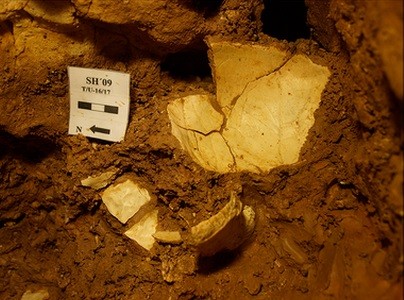A 430,000 year old skull was uncovered with wound marks in Spain which suggests that this human ancestor could possibly be one of the first murder victims in prehistoric times according to a new study.
According to Nohemi Sala of the Centro Mixto UCM-ISCIII de Evolución y Comportamiento Humanos in Spain, this skull was discovered in Sima de los Huesos where the site is located deep inside an underground system of caves in the northern region of Spain.
Scientists call this ancient skull Cranium 17 which was also uncovered with skeleton remnants from more than 28 individuals originating from the Middle Pleistocene period. The skull sample is made of 52 cranial fragments that was recovered during numerous excavations at the site spanning the past 20 years.
The most intriguing part of the skull was two lesions that penetrated the frontal bone, located above the left eye.
Using modern day forensic technology, the skull was analyzed especially the contour and and trajectory of the implied traumas where researchers believe that these fractures are evidence of two separate impacts using the same object.
The deadly blows on the head apparently revealed different trajectories around the time of death which are also questionable if it was an accident.
The location of the site where the skeletal remains were found was apparently only accessible to a deep tunnel that vertically runs down for 13 meters but these skull injuries do not match with a deadly fall. The location and kind of fractures appear to be caused by two blows made by the same object.
Researchers now conclude that this discovery of the fractured skull was caused by a direct result of intentional, lethal aggression. Sala and team believes that this is potentially the first ever case of earliest murder in human history.
Researchers also believe that the dead body might have been carried by other humans and dumped into this deep vertical shaft where the rest of the bodies at the site appear they might have been placed there intentionally which could also serve as an ancient burial ground during those times.
This study is published on the online journal, PLOS One.



























